Comments?
For the basics, see
- Website & Privacy Policies
- How To Get Involved
- The Role of the Park
Search options:
Department Site Map

Custodians:
Accessibility at Dufferin Grove Park
Luke Anderson: a talk at Dufferin Grove Park, Sept.30, 2018
Draft Plan page (ongoing)
History
2003: rink clubhouse access
Our first big accessibility issue was in front of the Dufferin Rink changehouse. The only entry was through the front door, and in order to get into the rink and and later to leave again, people had to use a sloped walkway that led from the sidewalk and that tended to get slippery in winter. By then the rinkhouse had become a well-loved social space as well as a place to skate, and lots of people came in and out. People often slipped on the slope and sometimes fell, or at least were anxious that they would fall. We had meetings with city staff in various years and finally they put in a shortcut -- but it was even more sloped.
So the rink staff helped CELOS to put in a two-step stairway right from the sidewalk to the non-sloped part close to the building. We got it prefab from Home Depot for $54.
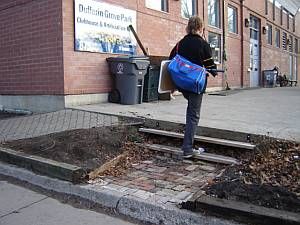
staff made a safer entrance, with two steps ("shortcut" on left)
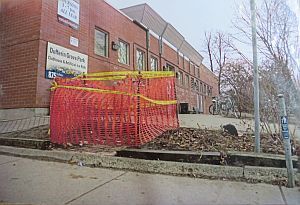
Parks staff put a danger fence around the stairs
It was immediately popular but two days later, the city blocked it off with a danger fence. They said it did not conform to code, and therefore skaters would have to go back to using the sloped access. Rink users were not pleased and several hundred signed a petition. So city staff worked out a complicated plan to cut into the concrete and regrade the slope. But they said it would be so expensive that it would take years to fit it in the budget. Sigh.
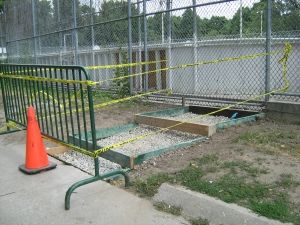
two terraced steps up from the sidewalk, no slope
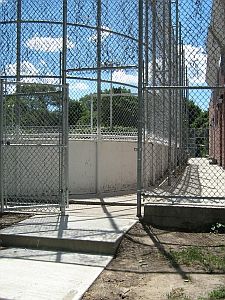
looks like it was always there, so obvious
Part-time rink staff realized that if a gate were cut into the fence by the east side of the rink, a shorter, non-sloped access could be created easily and cheaply. City staff initially said it wouldn't work but they agreed to try it and the rest is history.
1998 to 2006: the main dirt path
Until 2006, the whole length of the central north-south route through the park was a rutted dirt path (as the branch of the path leading off to the east still is). Yvonne, a wheelchair-bound park friend who lived half a block north on Gladstone, found that she couldn’t get into the park most days because the bumpy path rattled her wheelchair so badly that it was painful for her. So she stayed just outside, on the sidewalk, looking at the trees from a distance.
A search in the Toronto archives turned up the information that a deputation had asked the Parks Department the first time in 1925 to pave the path. But the city never found the money, until Gladstone Avenue was extended right through the park (when?). There are still people around who remember cars joyriding through the park on Gladstone, with kids jumping out of the way in both directions.
In 1973, the pavement was removed and the path reverted to dirt. There were repeated requests to pave it, more so after Yvonne started talking to staff in the 1990s. But the money never seemed to be there.
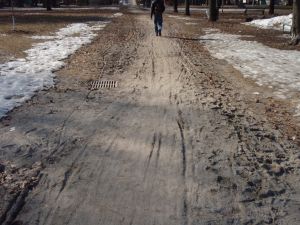
this was the centre path in March 2006
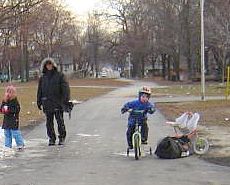
new paving, but only to end of basketball court
Then in November 2006, city staff decided to pave the part of the path that was beside the rink, so that the zamboni could drive around to scrape the ice without getting mud on the ice. The zamboni's needs were seen as more serious than the access needs of park users!
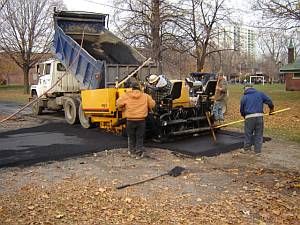
path had to be paved twice
Better than nothing. But the lowest-bid paving company did a substandard job. The park supervisor said it was okay, but one of the rink staff was from a family that ran the top paving company in a nearby city. Her dad came and looked and said the paving was unacceptable. So the city agreed to require the low-budget paving company to tear it up and do it over. They did a nice job the second time but there was still no curb cut. So people who use wheelchairs, strollers, and bikes still had to hop the curb.
City carpenters said they had a solution and sent over some solid wooden wedges, but they didn't work well or last long.
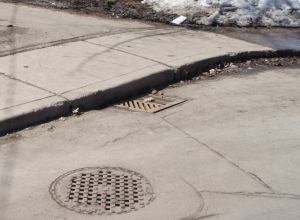
but there was still no curb cut
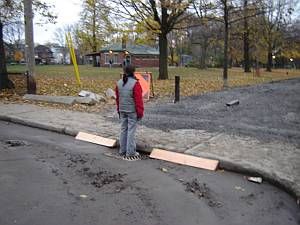
wedges to take the place of curb cuts
2008 to 2009 paving the path
Finally in 2008, former Ward 18 city councillor Adam Giambrone managed to get some of the funds for a wading pool renovation diverted to paving the main path. Perhaps it helped that the Accessibility for Ontarians with Disabilities Act (AODA) had been passed in 2005. So in 2009, the entire north-south walkway was paved, as well as two small paths leading to the playground.
Suddenly everything got easier. Bikes could go through smoothly, strollers could be pushed along without getting the wheels stuck in mud ruts, and of course wheelchairs and walkers no longer rattled the bones of their users.
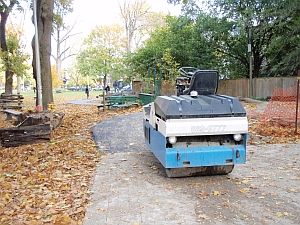
paving connected with the playground
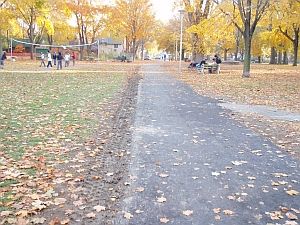
finally a paved centre path
2009: curb cuts at last
CELOS put out a bulletin about the need for curb cuts and met with city councillor Adam Giambrone's assistant over a longish time. Then the curb cuts finally happened.

curb cut at last -- catch basin makes uneven connection but sidewalk cut on left is good
2018
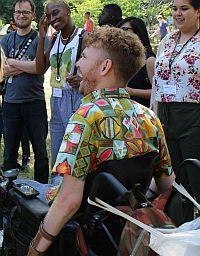
Luke Anderson stopped by
In June, during a tour of the park by sponsored the group 8-80 Cities, Luke Anderson happened to be riding along the path in his wheelchair to meet some friends. He’s the director of the StopGap Foundation. The group being toured was a bit star-struck when he kindly – and inspiringly – stopped to explain his foundation’s approach to accessibility. CELOS asked him to come back in August and teach us how to shape the chapter on good park access, for our conservancy proposal.
August 2018:
Luke came to the park on a Thursday afternoon for a first tour, during the farmers' market. He started off doing his shopping, and his observations about market access were no surprise -- Market manager Anne Freeman has been meeting with city staff over many years to bring access problems to staff's attention.
The farmers' market
The market was started in November 2002, inside the rink house. At the end of May, 2003, it went outside. The concrete slab "apron" around the outside of the clubhouse offered a solid base for some farmers' tents. The grassy areas down the hill and long the path could hold the rest.
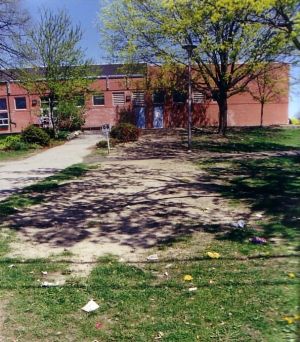
1996 -- the eroded hill was a problem from the start
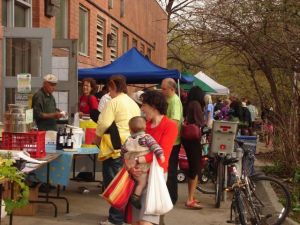
some farmers' tents are set up on the concrete slab here
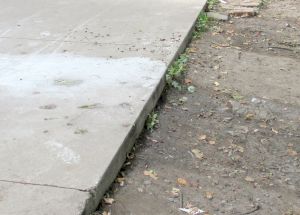
market slab edge is not level with the ground
Luke pointed out that the drop between the slab and the ground could cause a wheelchair to fall sideways, since the crowded market forces market customers to move right along the edge. Of course, people with strollers have been worrying about the same thing forever. This needs a redesign: maybe shallow terraces for the farmers with a sloped path along the side?
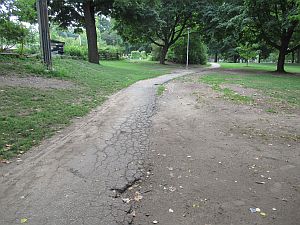
summer market site -- path eroded
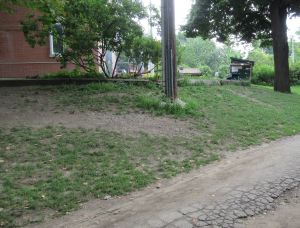
cowpaths show where people need steps, terracing
The path where most farmers set up on market days was already crumbling and eroded 25 years ago, long before the market began. No work has been done on it since then. Luke pointed out that the path is bumpy and shaky for everyone who walks along there, even more so for people who use wheelchairs. The hillside shows "cowpaths," also called "desire lines" where people walk to get where they want to go. They need terracing, plus a gently sloped paved path at the market's southern boundary.
Washroom access
Luke said that both washrooms are tight but can be negotiated by people who use wheelchairs. Both need a button to open the door.
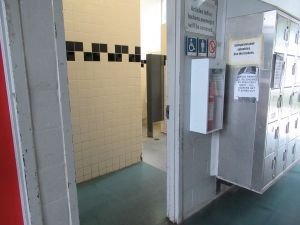
men's washroom entry wall
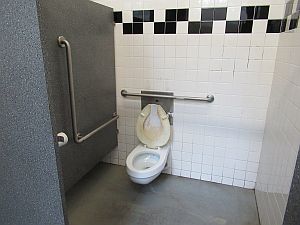
men's accessible washroom -- needs new toilet seat
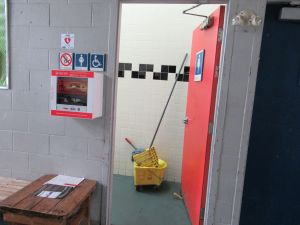
women's washroom entry, blocked by bucket -- move it
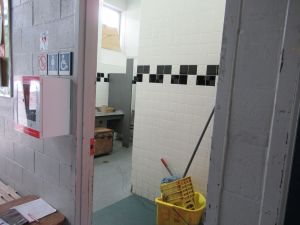
women's washroom entry wall
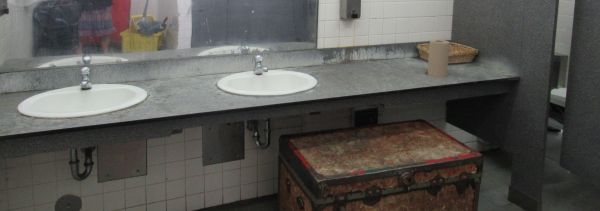
women's washroom counter and storage
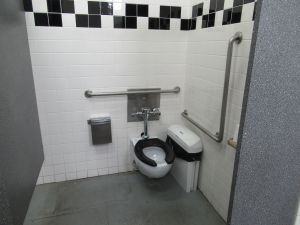
women's accessible washroom
Both washrooms can pass, but both can use some clean-up, for instance the stained men's toilet seat and the corroded women's washroom handwashing/baby changing counter.
Picnic tables (park furniture)
Luke pointed out that picnic tables can easily be made more accessible simply by replacing the table top with a longer overhang. Logs are also "park furniture," for instance the logs that surround the main campfire pit. Luke showed how the logs can just be moved outward slightly to allow easier access through the gaps.
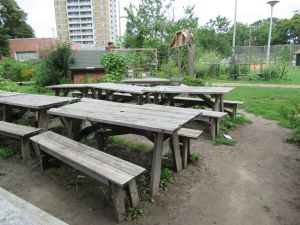
some of "Dan's Table" picnic tables could be extended
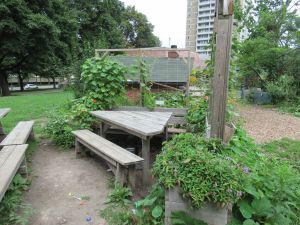
triangle tables too low to fit wheelchair
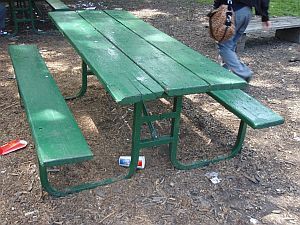
older collapsible tables have a bit more room
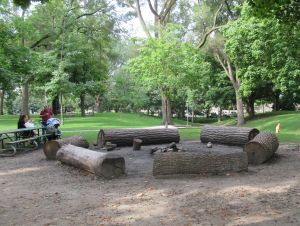
campfire circle had ONE accessible opening
Park paths
Luke said that wood chip paths are not good for people who use wheelchairs. The same is true for any wheeled conveyance -- bikes, strollers, walkers, or the carts that staff use to bring supplies to the cob cafe. Wheels dig into the loose chips.
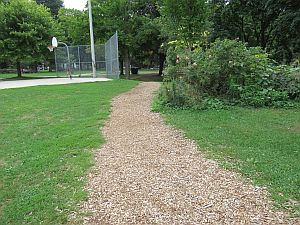
wood chip paths bad for wheelchairs, strollers, bikes
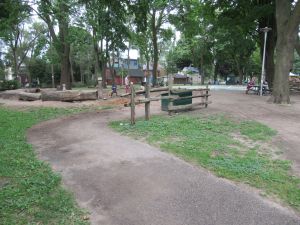
paved access to playground and wading pool, better...
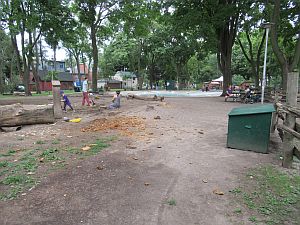
...but the sand and wood gets on top...
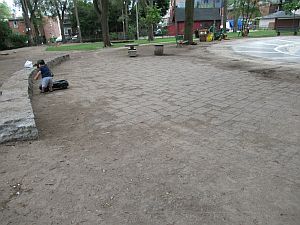
...and needs daily sweeping
Playground
Luke agreed that plowing up the ground to reduce injuries to falling children means the playground is inaccessible to anyone who depends on wheels (including strollers!)
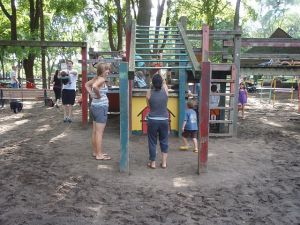
everything is plowed up except the danger zone
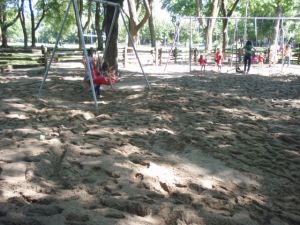
accessible swing surrounded by inaccessible plowing
Rain shelter
It looked like it might rain by the time the tour got to the playground. There's a rain shelter but it's too high off the ground to get a wheelchair out of the rain. Happily, it didn't start raining. But Luke suggested that a cheap and fun fix would be to add a solid earth berm to the front of the shelter. An added benefit to wheelchair and stroller access is "kids love to run up and down a slope."
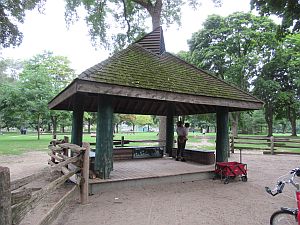
the rain shelter is raised a foot off the ground
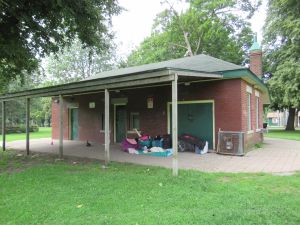
field house shelter is level - can also shelter homeless
Inclusion
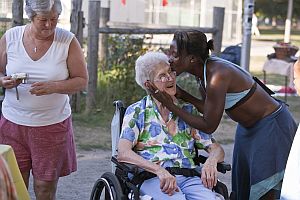
Mrs.Simutis and friends at Friday Night Supper
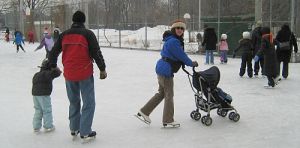
allowing strollers on rinks means access for families
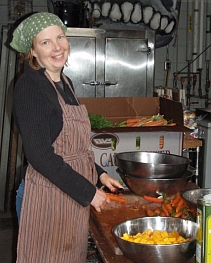
Mary has dysphasia and is a brilliant park cook
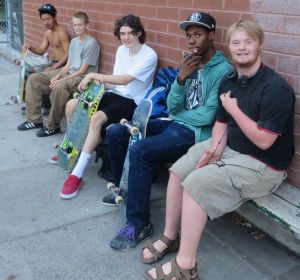
for skaterboarders, friendship is enriched by difference
There’s lots of work to be done to welcome everybody in the park – not only as park users but also as special-needs workers who can contribute to good work themselves. CELOS and a few park staff have some experience with this but we all need to learn a lot more. That’s a task near the top of the list for the conservancy.




 Printer friendly version
Printer friendly version